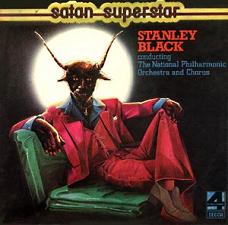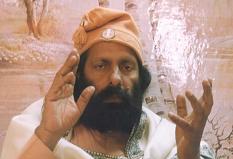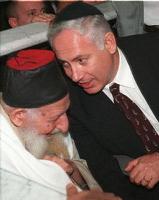Paleojudaica links to a bizarre story in the Nigerian Vanguard:
NIGERIA’S dogged cultural researcher, and erstwhile senior special assistant to the President on Arts and Culture, Catherine Acholonu-Olumba recently teamed up with India’s computer engineer and IT specialist, Ajay Prebhaka, winner of several awards as an upcoming computer “whiz kid” to undertake the most painstaking and ambitious cultural research project ever carried out on the shores of Africa.
The intrepid duo apparently discovered and translated “350 ancient stones” from Ikom in Cross River State. They concluded that
…Africa was home to a celestial, high technology civilization based in the present day location of the Sahara Desert – a civilization that was decimated by the deluge and by the war of the gods of antiquity, the hallmarks of which included the Sphinx and the Great Pyramid of Egypt.
the Ikom stone writings were the original source-book of the ancient Sumerian epic of creation, Euuma Ellsh, dated 6000 B.C. (the original source of Genesis) and of The book of the Secrets of Enoch; that the delta location of the monoliths was the limed global seaport of Tilmun, from where great ships sailed the global seas of antiquity supplying gold, palm produce, spices, dates and copper; that Mount Cameroon (known as “The Chariots of the God” ) was the Mecca and Rome of antiquity…
Ikom stone writings gave away their sacred language – The Garamma Language – the Lost Mother Tongue of mankind, the origin of the Hebrew Qabbala and the “Tera-gramm” name of Yaweh. Off-shoots of the Garamma writing include Nsibidi of Ekpe cult of Southern Nigeria and the Ogham sacred writings of the Celtic dwarfs (Druids) of ancient British Isles.
“Celtic dwarfs”?
The article tells us that “evidence abounds”, but anyone who wants to know what that evidence actually is needs to buy the book, Garamma: Stone writings of African Adam. According to the report, this book will be “launched in various African countries and in the African diaspora soon”, a rather curious distribution strategy for someone with claims supposedly significant for the scholarly world in general.
This is the second Vanguard report on the subject. The previous one, which covered much the same ground, ends with the note:
When Dr. Acholonu completes her work, and it becomes public knowledge in Nigeria and the rest of the world, her findings will permanently alter the status of Calabar and Cross River State and perhaps, as a nation, we will have another World Heritage Site. See how academia can contribute to the growth of tourism?
And the story itself broke last month in the Daily Sun (“Nigeria’s King of the Tabloids”):
Some 350 ancient stones, called monoliths found in Ikom are said to bear writings with the exact layout as those found in France dating to the Upper Paleolithic Period of 18,000 BC –12,000 BC. Acholonu and Prabhakar deciphered these writings and found that they contain the names of gods of Egypt and Mesopotamia and what they say are astronomical details such as the names of stars in various ancient languages and records of celestial events contained in ancient scriptures.
“The interpretation of the writings reveal the name of the language in which it is written. It says that the writing is called Gram (which is the origin of the words tetragram (the Hebrew name of God), penta-gram, grammar, milli-gramme and its multiple intonation of the name of Ham which shows that it is a heritage of Ham, the ancestor of the black race.
Alas for Acholonu, “tetragram” is not the Hebrew name for God. All it means is “four letters”, as a way of referring to the actual name given the Bible, which is YHWH (often spelt in translation with vowels added as “Yahweh”). And the word “tetragram” is derived from Greek, not Hebrew, and as “Tetragrammaton” first appeared in English in 1592 (Oxford English Dictionary; I don’t know if the word can be found in other languages earlier). This is just one small point that may help judge the rest of the thesis. The mysterious stones, meanwhile, are perhaps the akwanshi, which according to the Britannica are
circles of large stones…from one to six feet high, carved in low relief to represent human figures. They are thought to be no earlier than the 16th century.
No mention of inscriptions, though.
Acholonu is the author of Motherism: The Afrocentric Alternative to Feminism, she is the author of a number of scholarly books and articles, none of which appear to relate to her current, Graham Hancock-like, excesses. However, her role as cultural advisor to the president was not without controversy. This Day reported last year:
Acholonu’s first effort to establish her presence was in 1999 during the Chris Ofili brouhaha. She came out strongly to condemn the London -based Nigerian artist for using elephant dung in his portrayal of the Virgin Mary in a painting of the same title. She argued that Ofili’s reason for using elephant dung as symbol for fertility and growth was of poppycock and was simply a figment of his imagination. She concluded by asking if Ofili could actually paint his mother using elephant dung. Like Mayor Rudolph Guiliani and several others, Achlonu found this work by the I998 Turner Prize winner, which was part of the Sensation exhibition at the Brooklyn museum, in 1999, very offensive.
But her reaction to this issue, rather then win support of the artists, infuriated them. In a expeditious reaction Mike Omoighe, lecturer at the Yaba College of Technology lashed out at Acholonu, saying that her utterances were misguided. Her view, he pointed out, was prejudiced and based on sentiment and not objectivity. Sighting examples from Nigeria and different African countries, he emphasized that dung is indeed a symbol of growth and fertility.
However, Acholonu’s Indian collaborator Ajay Prabhakar remains obscure.
UPDATE: Local paper The Tide has more:
Prof. Catherine Acholonu-Olumba and Mr Ajay Prabhakar, Country Ambassador and Programmes Co-ordinator respectively for the United Nations (UN) Forum of Arts and Culture, have provided details of their finding in a book co-authored by them.
…The research result was first presented before a global audience at the round table on Inter-cultural dialogue hosted by United Nations Educational Scientific and Cultural Organisation (UNESCO) as part of the Black Heritage festival, in Badagry, Lagos, in May 2001.
Subsequently, the research team was hosted by the Black academics and Black communities in many states in the U.S, the statement said.
Among the “key discoveries” made in the course of the research was that the geographical area marked in the monolith joining of Rivers Niger and Benue represented the geometric ” centre of then [sic] Earth”.
Also, Nigeria is exactly at the place identified in the Bible book of Genesis as the centre of Eden, where the Tree of Life was located.
Filed under: Uncategorized | 8 Comments »






